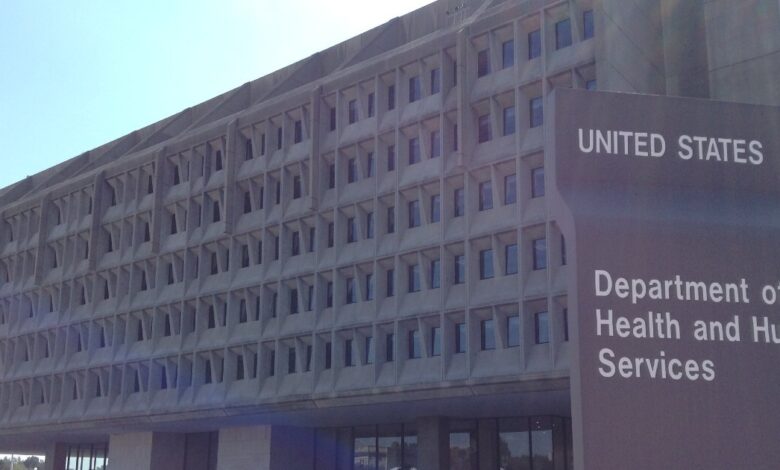New information blocking rules from HHS could cost noncompliant providers thousands


Healthcare providers who engage in information blocking could be on the hook for significant financial penalties, if proposed rules published by the U.S. Department of Health and Human Services this week are put into place.
WHY IT MATTERS
As required by the 21st Century Cures Act, the HHS Office of Inspector General is empowered to respond to info blocking complaints and determine whether healthcare organizations have “knowingly and unreasonably” interfered with access, exchange or use of electronic health information (notwithstanding some specific exceptions).
HHS has already designated information blocking penalties for the other actors bound by the rules: certified IT developers and health information exchanges/networks. Those types of organizations are subject to a $1 million penalty per violation as determined by OIG.
These new rules describe potential “disincentives” focused on healthcare providers – who could be penalized in several different ways, depending on the type of care they deliver.
“This proposed rule implements the [HHS] Secretary’s authority under Section 4004 of the 21st Century Cures Act, and would establish what are called disincentives for certain healthcare providers who have been found by the HHS OIG to have committed information blocking,” Deputy National Coordinator for Health IT Steve Posnack explained on a press call Monday.
“The proposed rule reflects contributions from across HHS, it’s an HHS-wide rule,” he noted. “ONC has been kind of the editor in chief in terms of stewarding the rule through the department and getting it out the door, but it is on behalf of the secretary and our colleagues at the Centers for Medicare and Medicaid Services, as well as the Office Inspector General and other HHS components across the department as a whole. The proposed rule starts the process to fill in the last remaining oversight aspect of the statute and complements the final rule issued by OIG.”
HHS is requesting public comment on the proposed rule, which will be published in the Federal Register on Wednesday, by January 2, 2024.
Under the rule, the Office of the National Coordinator for Health IT has developed three mechanisms meant to dissuade providers from information blocking – all based around reimbursement programs of the Centers for Medicare and Medicaid Services.
-
For hospitals, under Medicare’s Promoting Interoperability Program an eligible hospital or critical access hospital found by OIG to be engaged in information blocking could be deemed “not [to] be a meaningful electronic health record user” in an applicable EHR reporting period, according to HHS. “The impact on eligible hospitals would be the loss of 75 percent of the annual market basket increase; for CAHs, payment would be reduced to 100 percent of reasonable costs instead of 101 percent.”
-
For ambulatory providers, under the Promoting Interoperability performance category of the Merit-based Incentive Payment System, an eligible clinician or group found to be blocking would similarly be designated as not achieving meaningful use under the Promoting Interoperability performance category of MIPS – a score that can typically represent a quarter of a clinician or group’s total MIPS score in a year.
-
And for healthcare providers that are part of an accountable care organization, an OIG determination of info blocking could make them ineligible to participate in the Medicare Shared Savings Program for a period of at least a year. That could result in a provider being removed from an ACO or prevented from joining an ACO.
“We’ve emphasized from the beginning that with every single information blocking claim, it’s always going to be a case by case analysis,” said Posnack on Monday. “And some of that is going to be kind of disentangling if there are multiple actors involved: If there’s a developer certified health IT involved, if there’s a healthcare provider involved – who ultimately or jointly caused the information blocking to take place? Who might be accountable?
“All of those are the challenges that our colleagues at OIG will wrestle with first,” he added. “We provide them with subject matter expertise. But that’s the difficulty of the investigatory process. As we continue to make fact sheets, FAQs and other types of informational resources available, our hope is that it helps to clarify for the regulated community where some of those lines may be.”
THE LARGER TREND
Writing in a blog post on the ONC website, National Coordinator for Health IT Micky Tripathi and CMS Principal Deputy Administrator Jonathan Blum re-emphasize the point that, in the post-Cures Act world, “information sharing is expected.”
As they explain: “Thanks to a variety of technological, business, and policy advances making interoperable electronic health record systems widely available among hospitals and physician offices, most health information is now digital, accessible, and shareable. Not only does this let patients and their caregivers be more engaged in their care, it also allows for more seamless connectivity and exchange across all health care providers and payers.”
But too often, for too many years, ONC received complaints or found other evidence that “some persons and entities were exercising control over electronic health information in ways that limited its availability for access, exchange and use.”
The Cures Act of 2016 directed the HHS Secretary to “establish appropriate disincentives for health care providers that commit information blocking and to establish defined, allowable exceptions where practices do not constitute information blocking,” they write. “If finalized, this proposed rule would implement such appropriate disincentives.”
Those disincentives could be costly, they note. For eligible hospitals, for example, an OIG finding of noncompliance “could result in a median disincentive amount of $394,353.”
Under the MIPS Quality Payment Program, meanwhile, “our estimates illustrate that the median individual disincentive amount could be a loss of $686 for an eligible clinician, while an estimated median group of six clinicians could see a loss of $4,116, with a range of $1,372 to $165,326 for group sizes ranging from two to 241 clinicians (the estimated 2.5th to 97.5th percentile of group sizes).”
Tripathi and Blum encouraged stakeholders to attend a joint ONC and CMS information session on the proposed rule, scheduled for November 15, and direct people to HealthIT.gov for other information blocking resources.
ON THE RECORD
“HHS is committed to developing and implementing policies that discourage information blocking to help people and the health providers they allow to have access to their electronic health information,” said HHS Secretary Xavier Becerra in a statement. “We are confident the disincentives included in the proposed rule, if finalized, will further increase the appropriate sharing of electronic health information and establish a framework for potential additional disincentives in the future.”
Mike Miliard is executive editor of Healthcare IT News
Email the writer: [email protected]
Healthcare IT News is a HIMSS publication.




